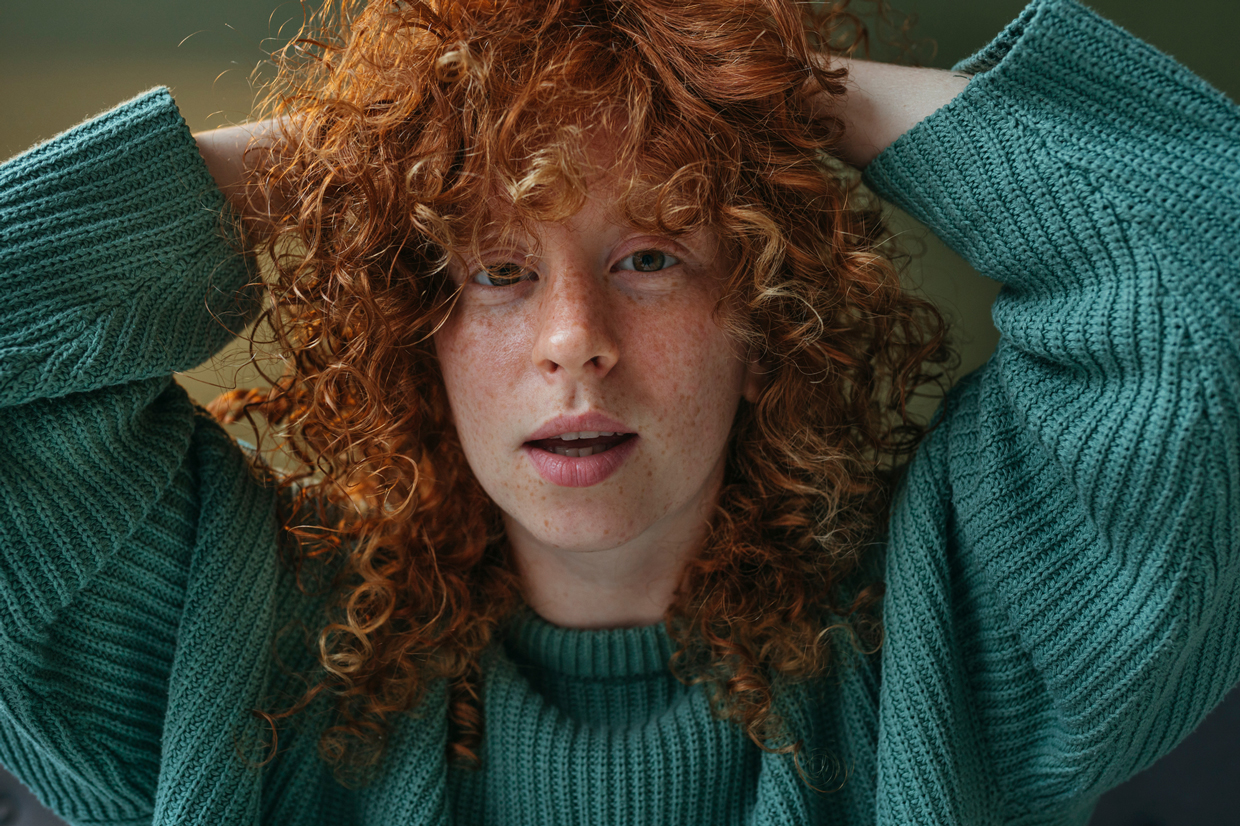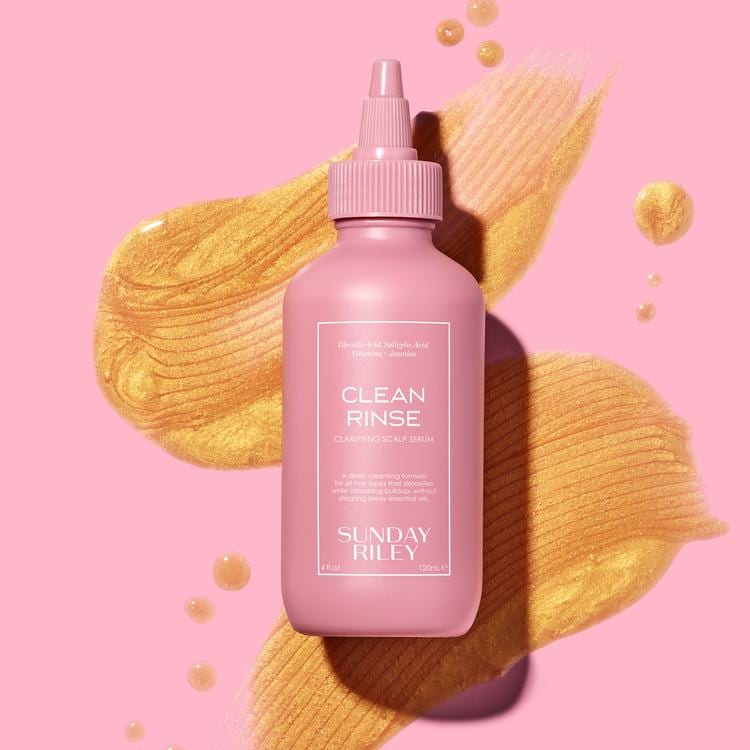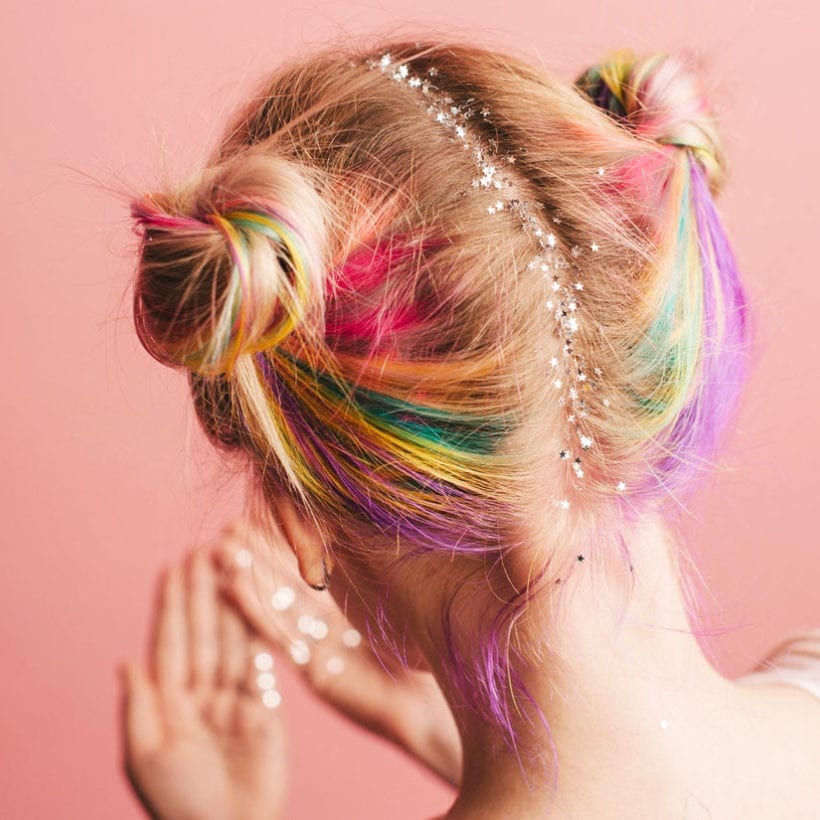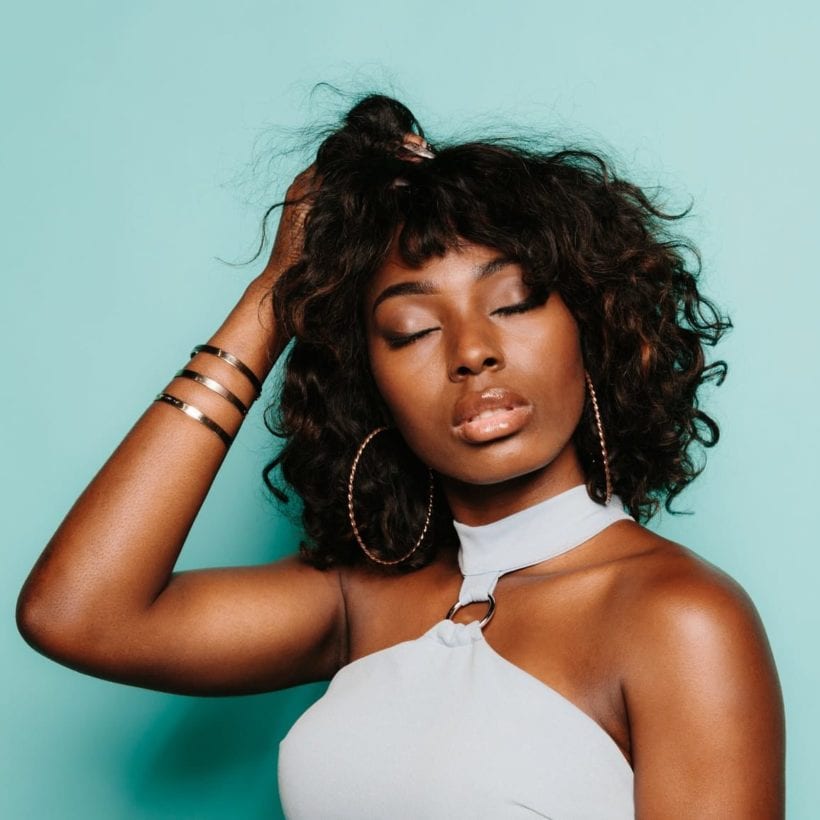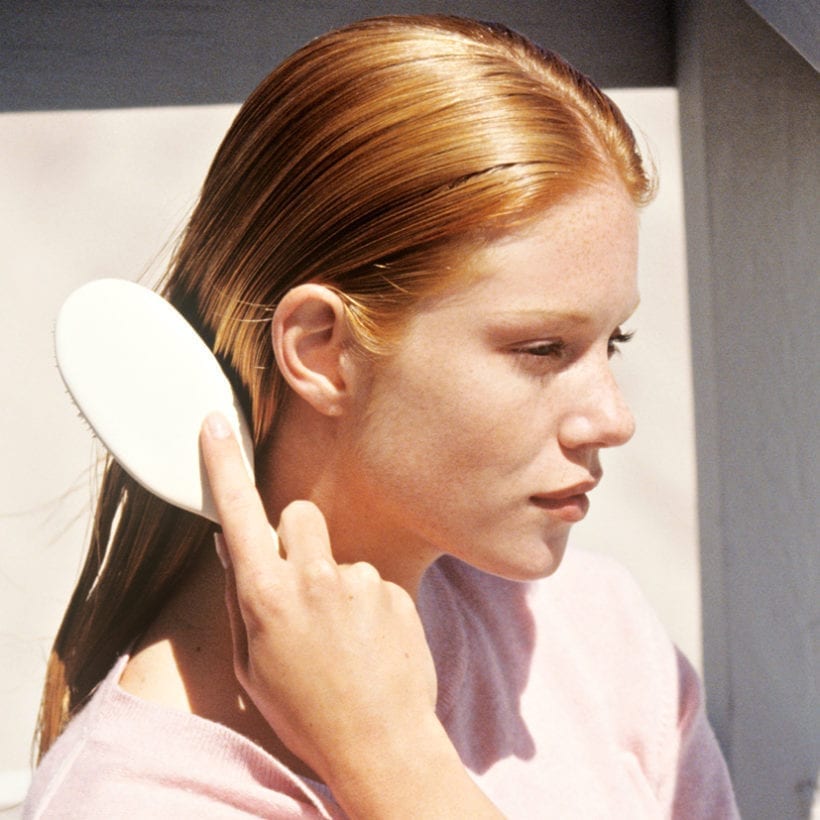Want locks like Rapunzel? We all do. But truth be told, it all starts with the scalp. Healthy hair has more to do with a healthy scalp than most of us realize. And one of the critical components of a healthy scalp is making sure it’s free of follicle-clogging dirt, oil, and buildup. Yet, if you’re not exfoliating your scalp regularly, you may notice that your hair lacks shine, body, and volume and may be at a standstill in terms of how fast or long it can grow.
Meet the Experts
Mark Townsend is a celebrity stylist and advisor to Collective Laboratories.
Bridget Hill is trained and certified as a trichologist with the renowned David Kingsley, founder of the World Trichology Society.
Marwa Bashir is a celebrity hairstylist, colorist, and R+Co Collective Member.
Dr. William Yates is a hair restoration surgeon in Chicago.
A clean sweep
You need a clean scalp. The scalp is skin, and just like the skin on the face and the body, it too requires regular exfoliation. But when the scalp bears an accumulation of dead skin cells, product buildup, pollution, dirt, and oil, it can cause your hair, from root to tip, to look dull, flat, and just not good. Plus, a scalp that hasn’t been freshly exfoliated can also make your color look lackluster. Celebrity stylist and advisor to Collective Laboratories Mark Townsend says that regular scalp exfoliation is essential because it removes excess sebum and product buildup, so the pores do not become clogged. “Exfoliating keeps the scalp fresh and clean, allowing the hair follicles to grow healthier, thicker, and shinier hair,” he adds.
Trichologist Bridget Hill further explains that regular exfoliation decongests the tissues to create a proper environment for hair fiber formation. “If you’ve ever had a facial, you know that exfoliation stimulates circulation and removes pore-clogging impurities,” she says. “Scalp exfoliation works much the same way, but instead of focusing on the pores, it hones in on the hair follicles.” Essentially, she says, scalp exfoliators are cleansers, yet they go beyond traditional shampoos, which are surfactants, to cleanse and restore the scalp.

Why scalp exfoliation is necessary
Hands down, the most common offenders of clogged follicles are improper cleansing and product buildup from dry shampoo and styling products like hairspray, mousse, and gels. Celebrity stylist and advisor to Collective Laboratories Mark Townsend uses a ton of dry shampoo — Dove Volume and Fullness Dry Shampoo is his go-to — but he never lets it sit on the scalp. “It’s meant to be sprayed on the scalp and the roots, massaged, and then brushed out,” he suggests. However, most users spray it directly on the scalp and leave it there, defeating the product’s purpose. Plus, improper use of dry shampoo also leads to product buildup, which can clog the hair follicles.
Think of scalp care and skincare as one in the same. “The benefits of exfoliating the scalp are similar to that of your face,” says celebrity hairstylist, colorist, and R+Co Collective Member Marwa Bashir. “Healthy hair starts at the scalp, but if the follicles are clogged, the hair will become dull and lackluster. The hair growth can slow down or completely stop in some areas,”.
Removing this mix of dead skin cells, product buildup, pollution, and environmental damage open up the pathways for the follicles to receive nutrients that are fundamental for hair health. No matter the location, all skin on the body naturally sheds dead cells and regenerates regularly. “A healthy scalp regenerates every 27 to 30 days, while an unhealthy scalp may renew those cells more rapidly or more slowly, triggering a range of abnormalities,” Hill explains. “The idea is to eliminate those triggers, since they can cause hair loss or other concerns, by creating a plan of action,” she says. The idea is to prolong hair’s growing phase by constantly feeding the scalp. The vitamins and minerals necessary to ignite cellular turnover create the environment for optimal hair growth.
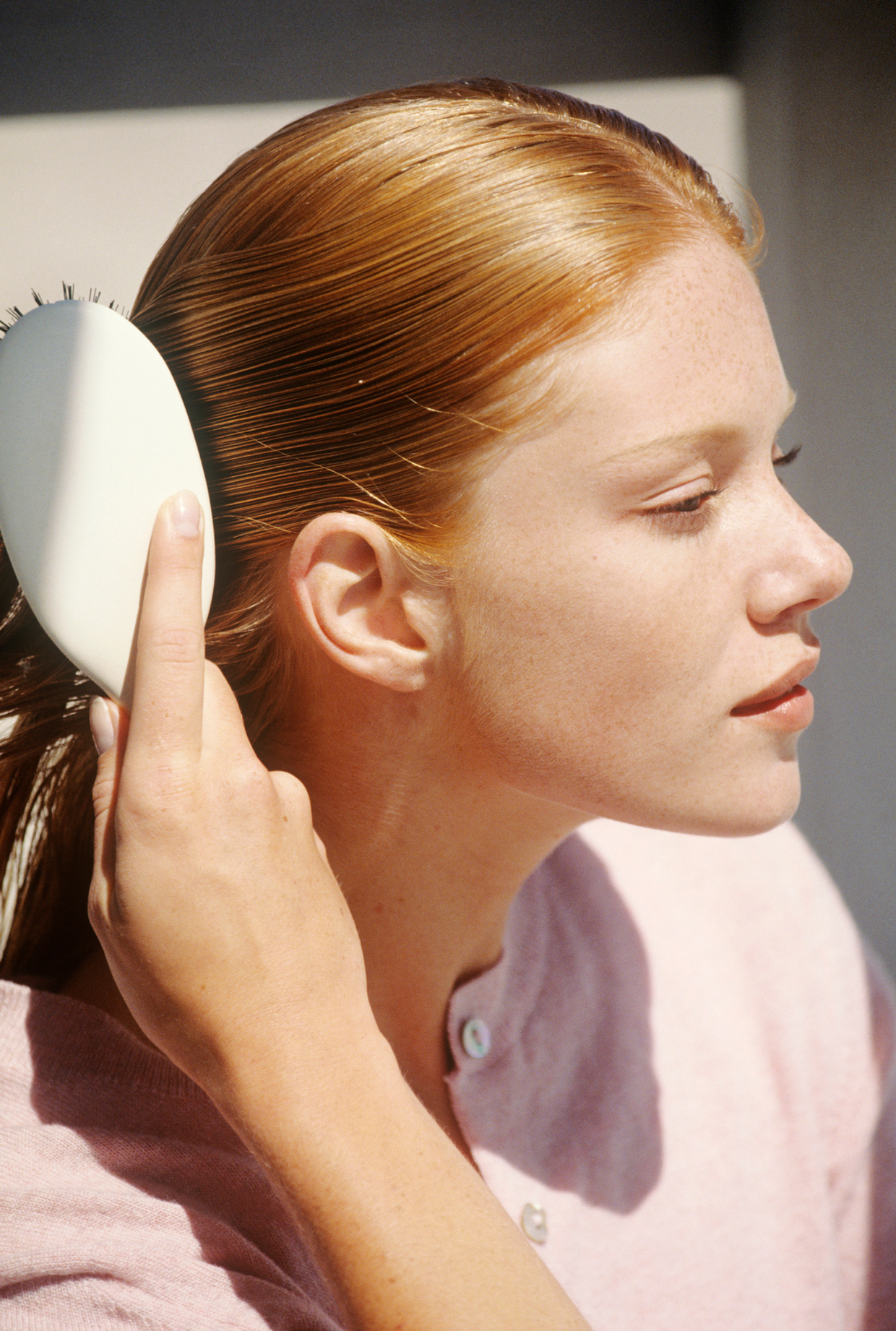
Often, it’s when there’s an adverse effect, like extreme itchiness, dandruff, dry, dull hair, or a change in hair growth, that prompts us to pay attention to our scalps the right way. But unfortunately, when the scalp is last on the list for nourishment and care, it can quickly become a breeding ground for serious problems that take time to clear up entirely. “Eating a healthy diet, exercising, drinking enough water, and using products that help to nourish the hair help,” says Dr. William Yates, a hair restoration surgeon in Chicago. “Avoid harsh chemicals, hairstyles that pull on the hair follicle (extensions and tight braids), and extreme heat styling as much as possible,” he adds. Sure, it sounds simple, but even the tiniest adjustments to your hair and scalp care routine can make a difference.
How often should you exfoliate?
Since no two scalps are exactly alike, you’ll want to consider your hair type, the current condition of your scalp, and what your lifestyle allows. Please don’t rush the process of exfoliating, nor do it haphazardly. Hill says that healthy, normal scalps should exfoliate bi-weekly or monthly at the very least. Heavy product and dry shampoo users should exfoliate about once per week — twice if necessary. “For those with dandruff, dermatitis, psoriasis, or other scalp medical conditions, refrain from exfoliating unless under trichological or medical care,” she says since these conditions typically have an overactive cellular turnover.
The right way to do it
There are a few different ways to go about it when it comes to exfoliating the scalp. For example, you can use a chemical exfoliant that uses ingredients to loosen up skin cells or a tool or device that manually removes the oddments on the scalp. “I always begin an exfoliating scalp treatment by loosening up surface debris by massaging oil into the hair and scalp for at least 10 minutes,” says Hill. From there, she incorporates either a gentle exfoliating brush and/or a scalp treatment that clears away the accumulation of oils, product resins, and environmental debris, all of which can compromise scalp health.
Post-exfoliation, it’s essential to keep the scalp’s microbiome balanced and nourished. “Regarding post-treatment products, keep them simple, clean, and alcohol- and fragrance-free,” advises Hill. “When leaving anything on the scalp, it should be cooling, nourishing, and restorative.” She also recommends committing to a simple pre-shampoo scalp treatment and regular scalp massages to retain surface scalp health.
The most effective exfoliators
What to use: A clarifying scalp serum, like Sunday Riley Clean Rise
What it’s good for: Refreshing the scalp and hair
How to do it: Super simple to do, apply this mess-free liquid serum that makes use of vitamins, alpha hydroxy acids (AHAs) such as glycolic acid, and beta hydroxy acids (BHAs) like salicylic acid to remove oil, dead skin, and pollution that linger on the scalp. Start by making small sections within the hair and using the nozzle tip as a guide; gently squeeze the serum directly onto the scalp and massage in. After 30 minutes (you can leave the serum on for less time if you desire), rinse it out and follow your regular hair routine. Hair emerges super shiny, soft as silk, and beyond bouncy.
What to use: A boar bristle brush and castor oil
What it’s good for: Loosening flakes and buildup
How to do it: Bashir prefers to use a boar bristle brush to gently scrub away flakes on the scalp and loosen up product buildup. Then, she applies castor oil and allows it to sit for 20 minutes before shampooing it out on dry hair. “The oil is amazing for hair growth, moisturizing the hair, preventing dandruff, and treating scalp infections,” she explains.
What to use: A scalp massaging tool or device
What it’s good for: The virgin scalp exfoliator
How to do it: For those new to scalp exfoliation, a tool like Wet Brush’s Head Start Exfoliating Scalp Massager makes the routine that much easier to adopt. Not only does it feel good on the scalp, but according to Bashir, any act of scrubbing or brushing helps to stimulate the scalp and encourage growth and cell turnover. Plus, you can fill this massager with shampoo or oil for an extra boost.
What to use: An exfoliating or deep cleansing shampoo
What it’s good for: Dry hair or those in a pinch and looking for a fast cleanse
How to do it: Exfoliating and cleansing shampoos are used just like regular shampoo — apply, lather, and rinse. Using a weekly cleansing shampoo like Collective Laboratories Detoxifying Shampoo, Dr. Yates Apple Cider Vinegar Reset Clarifying Shampoo, or Headquarters Cleansing Shampoo is a must for quickly removing all the gunk from the scalp. The shampoo format helps thoroughly cleanse the roots and the scalp while boosting hydration. Since some exfoliating shampoos (and scrubs) can be harsh on hair’s mid-lengths and ends, Townsends recommends replacing lost moisture with a moisturizing conditioner, like Dove Hair Therapy Hydration Spa Conditioner.
What to use: A sugar- or salt-based exfoliating scrub or mask
What it’s good for: Manually exfoliating the scalp for more of a salon-like experience
How to do it: Sugar- and salt-based exfoliating scrubs are a good way of removing lingering dirt, oil, and dead skin cells while unclogging the hair follicles. Both are effective, but when using a salt scrub, make sure to choose one that isn’t drying or harsh on the scalp. Instead, look for a formula, like Philip B. Peppermint Avocado Scalp Scrub, that is blended with oils and hydrating ingredients to retain moisture and balance. Regardless of the scrub you use, apply a palm-sized amount to a wet scalp and gently massage using the fingertips. Sugar-based scrubs such as Cuvée Beauty Sugar Scalp Scrub may wash out a little easier, but make sure to thoroughly rinse the scalp before following your regular shampoo and conditioner routine.
What to do: An in-office professional exfoliating treatment, like HydraFacial Keravive
What it’s good for: Clearing clogged follicles, increasing hydration, removing dead skin, and increasing circulation
How to do it: It’s best to trust your hair and scalp to a professional for this one. The 30-minute treatment consists of an in-office cleanse and exfoliation — similar to what you experience with a Hydrafacial treatment on the face — to remove dead skin, dirt, and oil, and the hydrating and nourishing Hydrafacial Keravive Peptide Complex Solution, which infuses the scalp with polypeptides and proteins for healthier, thicker hair. There’s also an at-home version of the solution, which you should use for 30 days to enhance the results further. By deeply cleansing, nourishing, and hydrating the scalp (it works on all skin types and is safe for color-treated hair, extensions, and doesn’t interfere with topical or oral hair-growth supplements and treatments), hair emerges healthier and fuller.
We only recommend products we have independently researched, tested, and loved. If you purchase a product found through our links, Sunday Edit may earn an affiliate commission.
